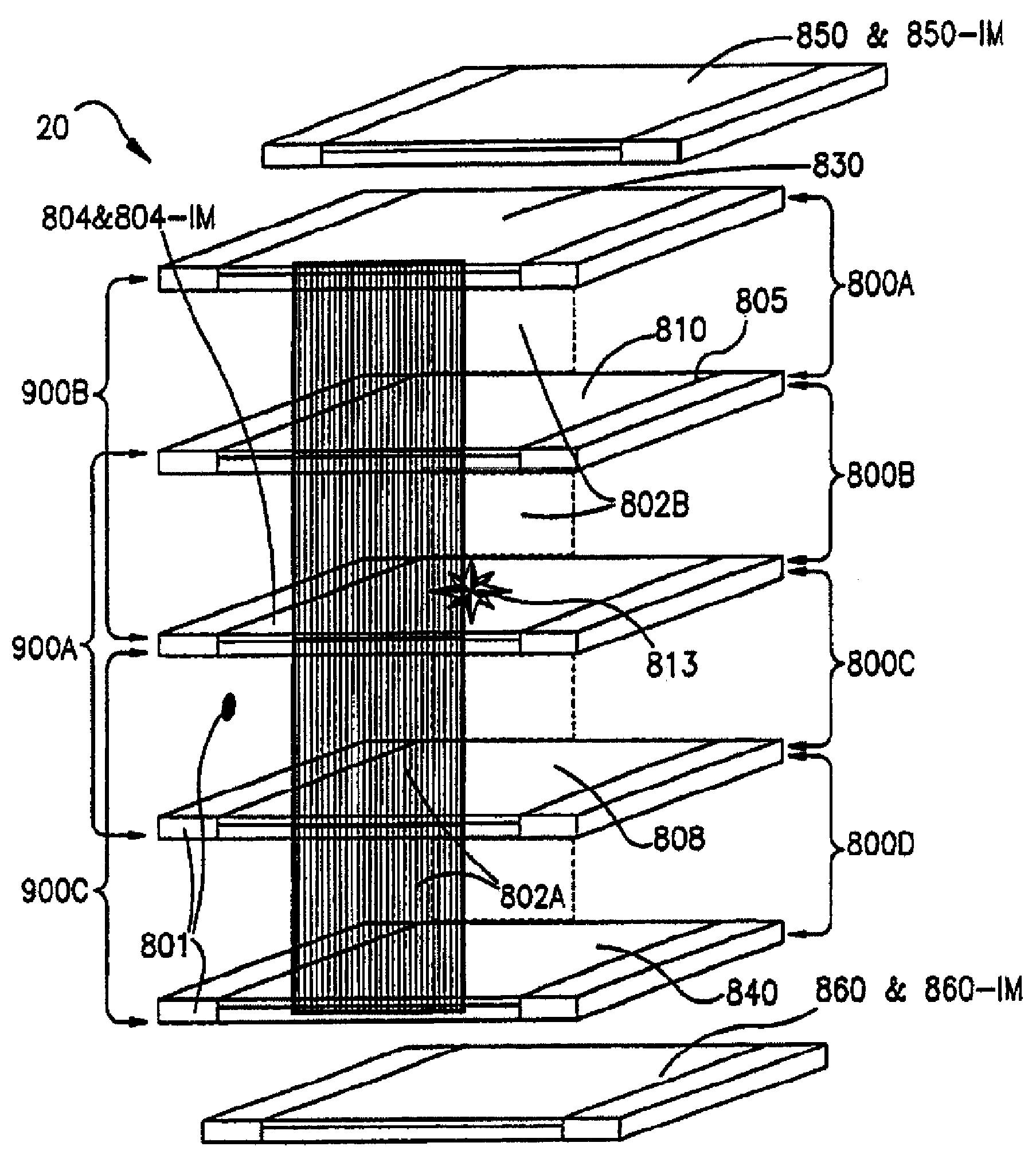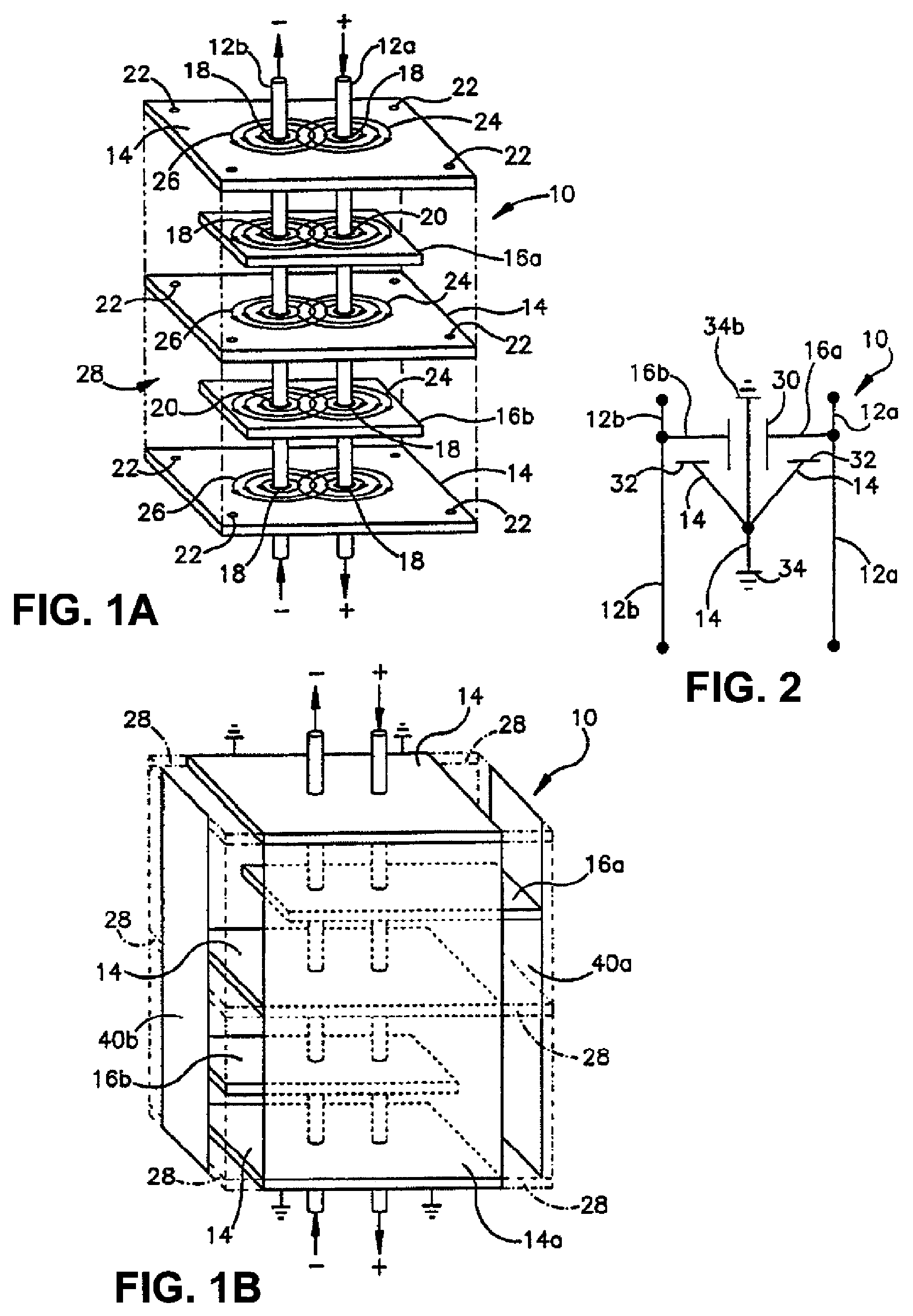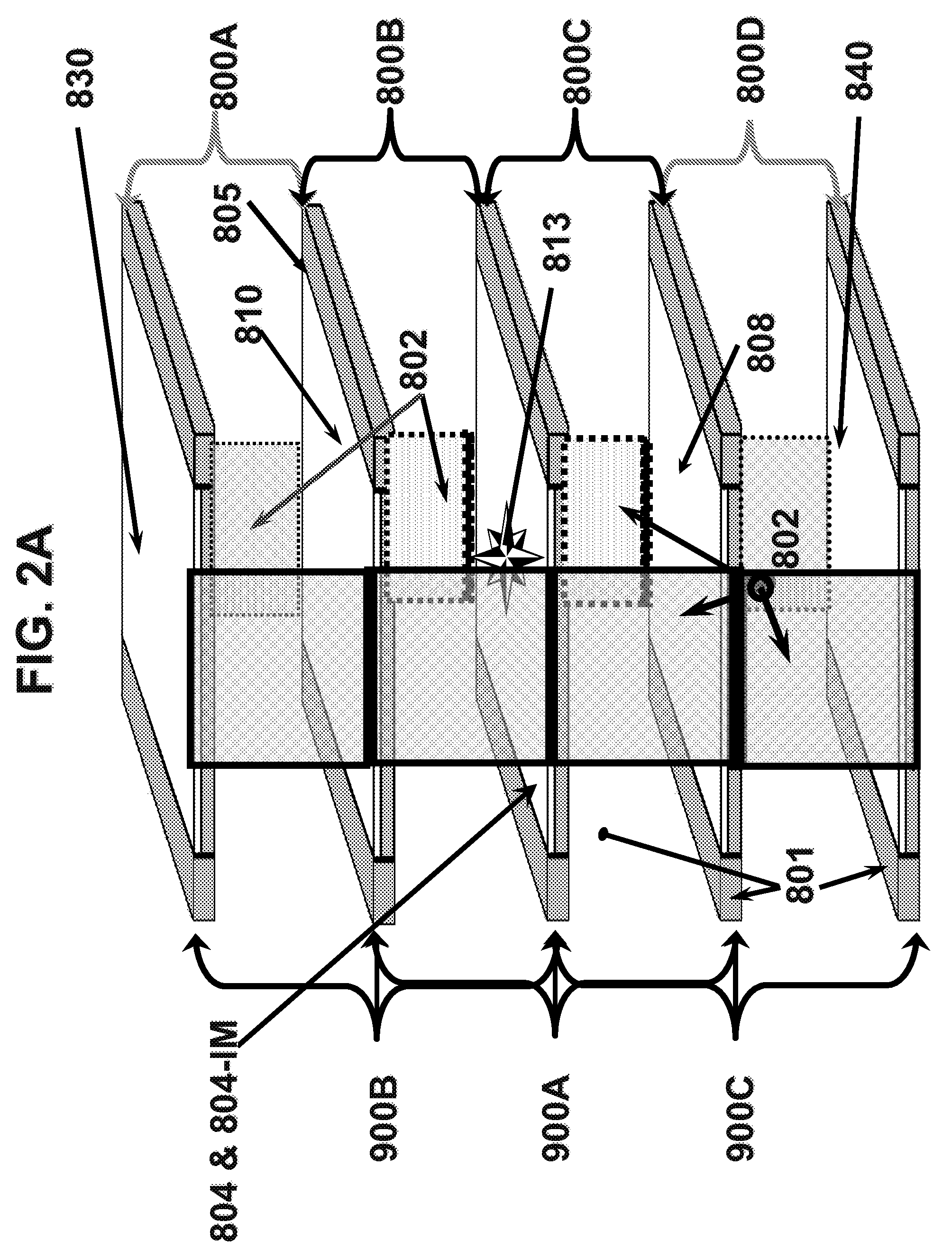Energy conditioning circuit arrangement for integrated circuit
a technology of energy conditioning circuit and integrated circuit, which is applied in the direction of emergency protective arrangements for limiting excess voltage/current, cross-talk/noise/interference reduction, and electrical systems that have undergone short product life cycles, etc., to achieve cost-effective and solve or reduce industry problems and obstacles
- Summary
- Abstract
- Description
- Claims
- Application Information
AI Technical Summary
Benefits of technology
Problems solved by technology
Method used
Image
Examples
embodiment 20
[0130]Before embodiment 20 of FIG. 4 is placed into circuitry and energized, structures 802A and 802B should electrically connect conductive pathways to one another in a typical circuit system and provide externally located conductive pathways or areas (not shown) or same external conductive paths (not shown) a good electrical connection without any conductive interruption or gap between each respective conductive structures 802A and 802B.
[0131]In FIG. 3, single cage-like structure 800B mirrors single cage-like structure 800C except that differential electrode 818 (not shown) contained within, and exit / entrance sections 812A and 812B (not shown) as well as conductive pathway extension structures 812A and 812B (not shown), are positioned in a generally opposite placement position relative to one another or its paired mate in multi-paired applications, and will operate in an electrically balanced manner with one another conductive pathway differential electrode of conductive structure...
PUM
 Login to View More
Login to View More Abstract
Description
Claims
Application Information
 Login to View More
Login to View More - R&D
- Intellectual Property
- Life Sciences
- Materials
- Tech Scout
- Unparalleled Data Quality
- Higher Quality Content
- 60% Fewer Hallucinations
Browse by: Latest US Patents, China's latest patents, Technical Efficacy Thesaurus, Application Domain, Technology Topic, Popular Technical Reports.
© 2025 PatSnap. All rights reserved.Legal|Privacy policy|Modern Slavery Act Transparency Statement|Sitemap|About US| Contact US: help@patsnap.com



